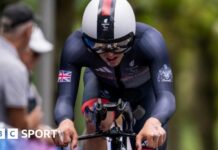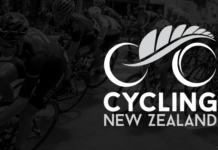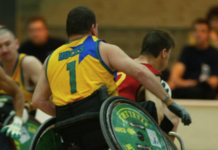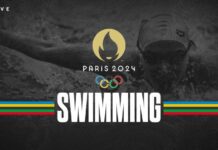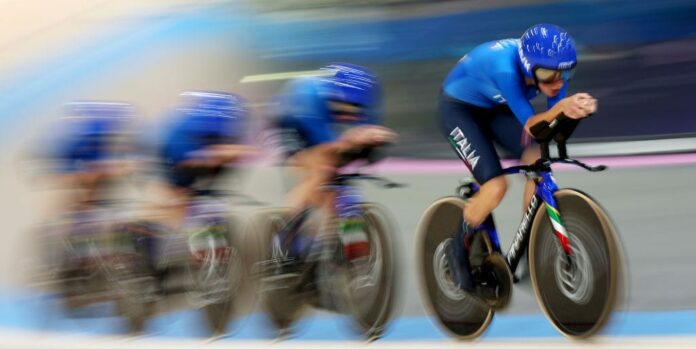One of the most fun parts about watching cycling at the Paris Olympics is drooling over the latest technologies that the world’s fastest bike riders get to employ in their unending quest for speed. From ultra-lightweight frames to aerodynamic helmets, the Olympics become a showcase for state-of-the-art gear that not only appeals to professional athletes, but also to avid amateur cyclists.
It’s fun because it’s so easy to imagine yourself on and in the latest technology, flying around the velodrome in a seventy-kilometers-per-hour blur. And while you or I can’t buy a Formula 1 racecar, for example, we can buy the latest, fastest, and most technologically advanced pieces of cycling gear that we see every day during the Olympic games. At least, we can, in theory.
Bicycle racing’s governing body, the Union Cycliste Internationale (UCI), has a rule stating that any bike, part, helmet, or any other piece of gear a rider might use in a UCI race must also be commercially available to anyone “practicing cycling as a sport.” This rule ensures that the same high-tech bicycles and accessories used by top competitors could, in theory, be acquired by everyday cyclists—if they can afford the sky-high prices.
The UCI Rule and Its Implications
The rule—Article 1.3.006—includes a stipulation that teams and manufacturers hoping for equipment still in the development or prototype stage can apply for authorization for usage. However, according to the rule, such equipment must be “in the final stage of development and for which commercialization will take place no later than 12 months after the first use in competition.”
Over the years, this rule has made for some interesting list prices, as one of the ways companies skirt the commercialization clause is by making their bikes available to the public at an absolutely obscene cost.
Tim de Waele//Getty Images
Team Great Britain breaks a New World Record, during the Women’s Team Sprint Qualifiers at the Paris Olympics.
For example, Great Britain’s track cyclists will ride the UK Sports Institute’s UKSI-BC1 and the Hope HB.T Paris. At the time of this writing, those bikes retail for $69,534 and $31,540, respectively. Meanwhile, Australia’s riders will race on a $59,525 Factor Hanzo track bike, and Italians will ride a $31,132 Pinarello Bolide F HR.
Earlier this year, Italian bikemaker Wilier Triestina unveiled a time-trial bike called the “Supersonica SLR.” It was designed and built for WorldTour outfit FDJ-Groupama, but more specifically, for their time trial specialist, Stefan Küng, who rode the Supersonica to an eighth-place finish in the Olympic time trial.
You can order a top-shelf Supersonica SLR for around $29,500.
However, the most eye-catching price tag comes from Japan, whose track teams will use V-IZU TCM2 and TC-M1 bikes, which “retail” for $136,740 and $121,345 respectively.
“Retail” is in quotes because there’s no way these things are making it to anyone’s local bike shop. But in order to use the bikes in the Olympics, manufacturers have to make them available to John and Jane Q. Public. This is why you can head right over to the UK Sports Institutes’ website and order your UKSI-BC1. In almost every case, these ultra-high-end bikes and bits of gear are made to order.
How do we prevent someone from ordering another nation’s bike and copying what we’ve done? We put a price tag on it that makes it impossible to purchase.
“Every bike Pinarello produces is commercially available,” a spokesperson for the Treviso-based said. “If consumers want any of their bikes, they can order them. With such specialist bikes as their Bolide F HR and Bolide F TT, these bikes must be ordered and produced on demand, though. They do not have fleets waiting in warehouses.”
Of course, one of the easiest workarounds for brands is to list these bikes as out of stock. After all, you can’t buy something that a company doesn’t have. Or, in the case of Wilier, who made the Supersonica specifically for Küng, limit size options. In other words, unless, like Küng, you’re 6’ 4”, you’ll be throwing your money away, as the Supersonica is only “available” in one size.
Strategic Pricing to Protect Innovations
However, according to Factor Bikes CEO Rob Gitelis—whose Hanzo track bike cost the company nearly $2 million to develop—these eye-watering prices are usually only in place until the Olympics are over. As the Olympics require bikes to be commercially available for one year and one day prior to the events in which they’ll be used, companies set astronomical prices in order to discourage competing nations from buying new and competing technologies for their own research and development purposes.
“We don’t want other nations to know exactly what we’re working on,” Gitelis said. “But according to the UCI, if somebody places an order for one of these bikes, it has to be delivered within sixty days of receiving the order. So, how do we prevent someone from ordering one from another nation and copying what we’ve done? We put a price tag on it that basically makes it impossible to purchase.”
But Factor is ultimately in the business of selling bikes. And while track bikes will always make up one of the smallest corners of the cycling market, Gitelis still wants riders on Factor bikes. That’s why the company is planning to sell complete Hanzo bikes for a much more palatable $6,000 to $12,000 starting the day after the final Olympic track cycling event.
“We’ll be lucky to break even on this particular bike,” Gitelis said. “But we do want these bikes to be raced by athletes who enjoy racing bikes and want to have the very best equipment. So, we want to make this commercially available at a reasonable price.”
One of the many reasons people love cycling is because it’s more man (ahem, person) than machine. No doubt you’ve heard the old adage, “It’s not the bike, it’s the legs.” Or perhaps there’s someone in your cycling club who loves to talk about how he beats up on guys riding $13,000 S-Works on his fifteen-year-old Madone with rim brakes and mechanical everything. Because, for the average cyclist, it is more about what’s in the legs than what’s beneath the rider.
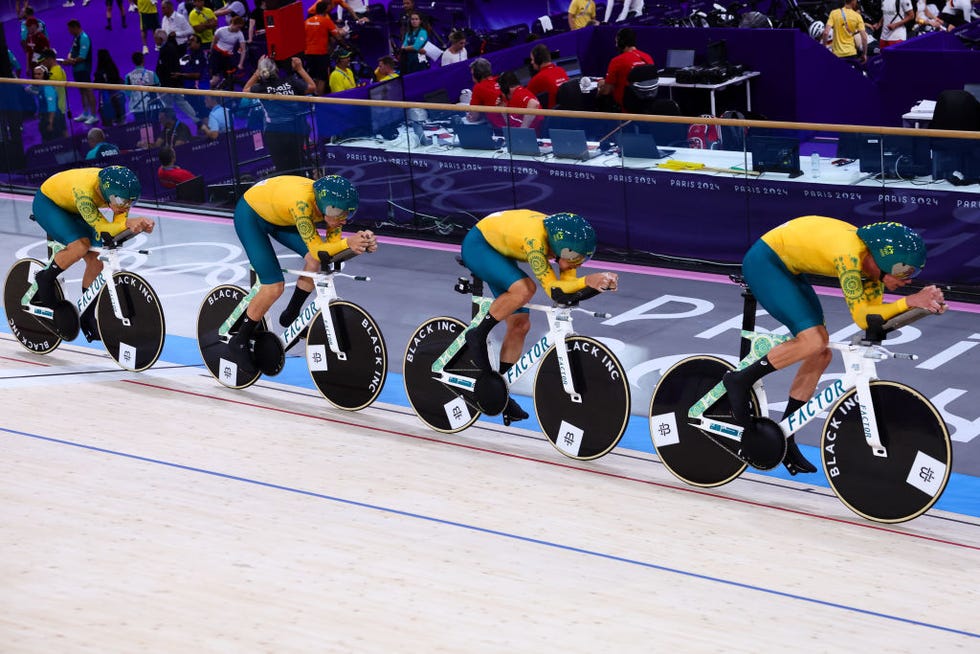 Icon Sportswire//Getty Images
Icon Sportswire//Getty Images
Team Australia during the Men’s Team Pursuit at the Paris 2024 Olympic Games
But when you reach the upper echelon of sports, cycling, or any other, the margins between athletes are tiny. Therefore, teams look for any and every potential chance to shave even a watt or two off of their riders’ performances, as such improvements can mean the difference between winning a race like the Olympics and not even making the podium.
Considering all of that and the fact that many national sporting organizations have the means to develop the highest of highest-ends in bicycling technology, all of that makes sense. And all of that costs a lot of money.
However, according to Article 1.3.006, you or I need to be able to buy those pieces of bicycling technology. But be ready to drop major coin if you want your own Olympic-level gear.
The “cheapest” bike being used by the majority of these Olympics’ wealthiest nations in the Saint-Quentin-en-Yvelines Velodrome is the Look P24, whose radical new frameset retails for a humble $13,010. According to Look’s vice president of sales and marketing, the P24 frameset has been shipping out to consumers since at least last December.
“It’s like a Formula 1 product,” Look’s product manager of bikes, Romain Simon, said of the P24. “But we want Formula 1 to be accessible to everyone.”
Of course, if you want to get a fully built Olympic-level bike, you’ll have to fork over almost seven thousand more bucks, as the Canyon Speedmax CFR Track—which will be used by Team USA and the Danish track team—costs $19,999.
But like Wilier’s Supersonica, the Speedmax CFR Track is only available in limited sizes with nothing bigger than a Large, likely due to the riders these bikes were developed for.
So, if you’re a taller rider like me, you’re out of luck there. Of course, we could go for the $29,500 Wilier.
Something else a large rider like myself would have trouble with sizing? A skinsuit.
Swiss company Assos developed their new skinsuit, the Fenoq, with Olympic-level riders, including Küng, in mind.
“It’s not like a jersey or the bib shorts you can find on the website,” said Luca Zanasca, Assos’s senior manager of development. “We need to work with the body of each rider. Stefan Küng is different from Stefan Bissegger, for example.”
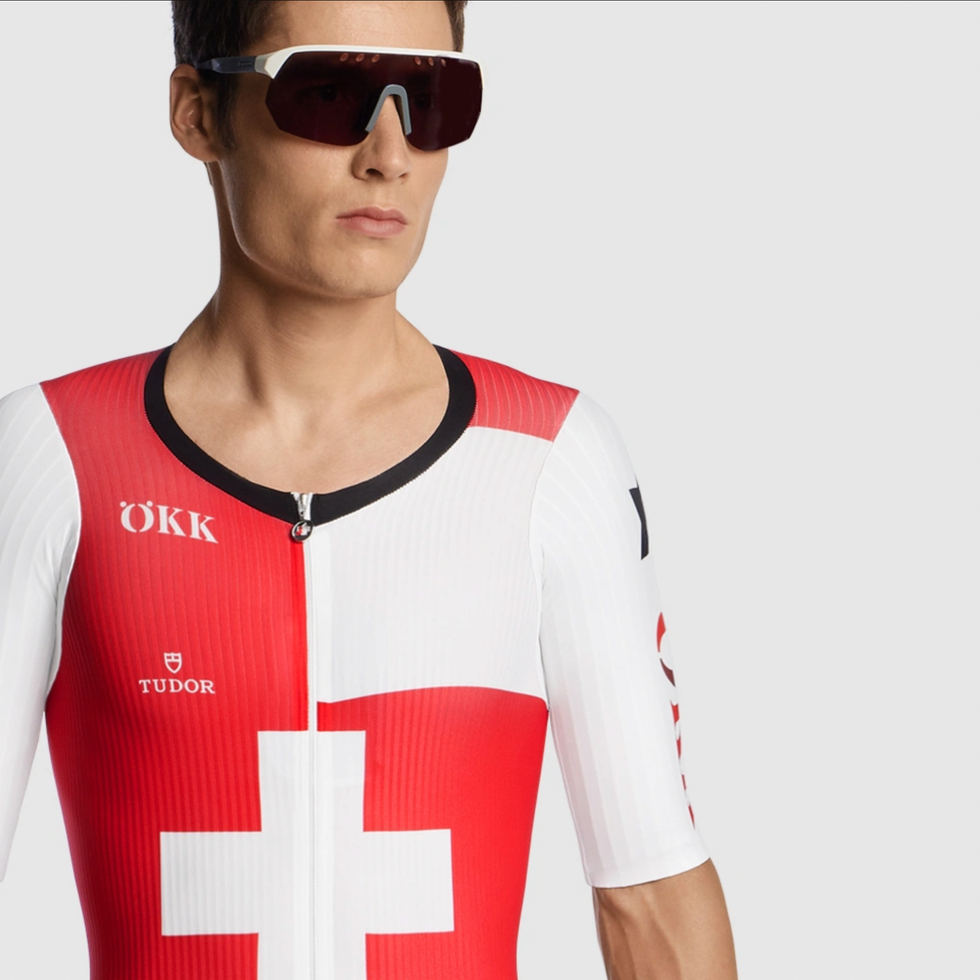 Assos
Assos
Front view of the Fenoq skinsuit by Assos
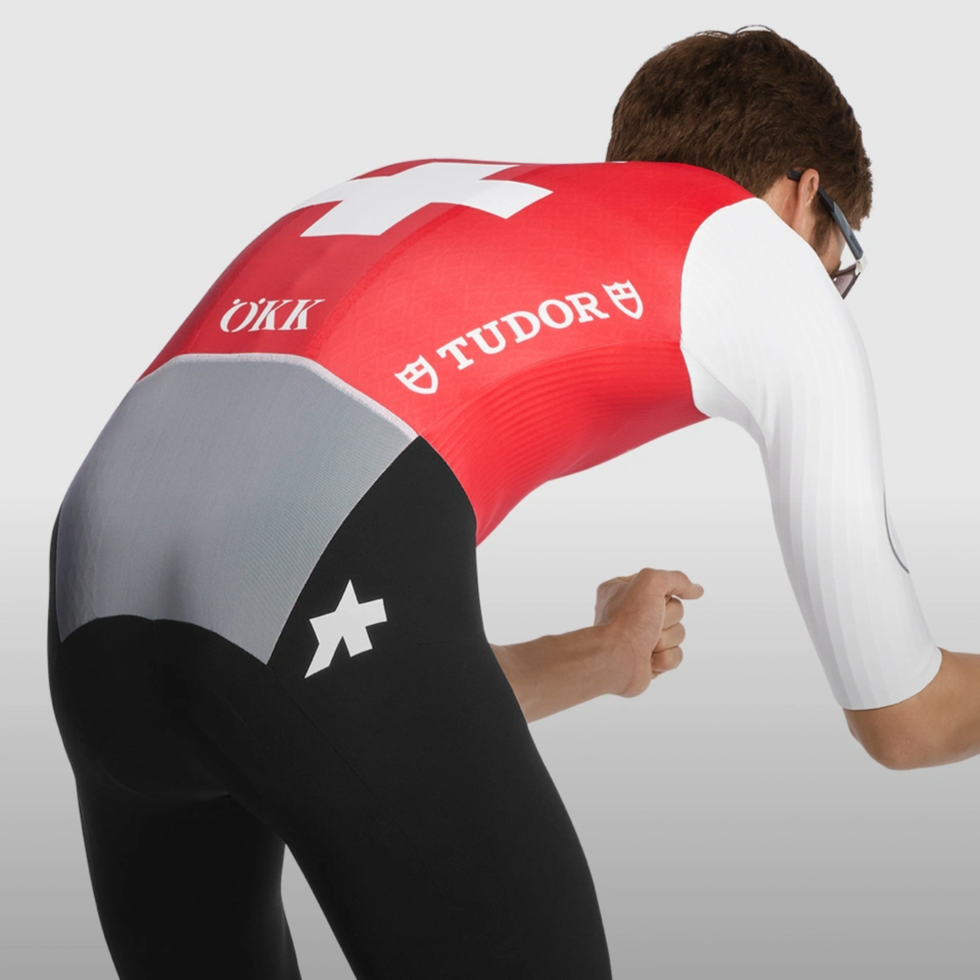 Assos
Assos
Rear view of the Fenoq skinsuit by Assos
The Fenoq, which took about six months to develop, will set you back $7,040 US. That price includes both a skinsuit and a pair of overshoes. While you can send measurements in through Assos’s website, Zanasca recommends an in-person measurement appointment at Assos’s headquarters in San Pietro di Stabio, Switzerland. So, toss in a quick trip to Europe, and your new Assos Fenoq will set you back over ten grand.
Zanasca admitted that while Assos is happy to make bespoke skinsuits for the average consumer, the Fenoq was designed and developed with WorldTour, World Championship, and Olympic-level performance in mind.
Economic Disparities Among Competing Nations
One thing you may have noticed a few paragraphs back is the countries investing tremendous sums of money into the development and ultra-limited production of these race machines: Japan, Great Britain, Italy, and Australia.
These are major economies. In fact, according to the World Bank Group, those nations’ economies rank fourth, sixth, eighth, and thirteenth, respectively. Meanwhile, Stefan Küng’s Switzerland ranks twentieth, but is the highest-ranked nation on Earth whose population is fewer than one million people.
It makes you wonder how tiny and less economically flush nations can compete. Is it really more man than machine? Or can money buy Olympic glory?
Coming off of a Tour de France that saw smaller teams like Intermarché-Wanty, Arkéa-B&B Hotels, and TotalEnergies slaying their giant, uber-funded competition, it’s tempting to hope for some upsets throughout these Olympics. However, the paradigm of road racing is different from that of track cycling and time trialing, where we see most of these obscenely priced pieces of equipment.
 Jared C. Tilton//Getty Images
Jared C. Tilton//Getty Images
The USA women’s pursuit squad riding their Canyon Speedmax CFR Track bikes at the 2024 Paris Olympics.
That’s because aerodynamics and engineering play more of a role on the track and in a time trial than they do in a mass-start road race. These eye-popping prices aren’t necessarily a result of the materials used in the builds as much as they reflect the accumulation of time and resources spent developing these groundbreaking bicycles.
Can countries like Lithuania, Malaysia, and Trinidad and Tobago compete on a research-and-development level with the likes of Great Britain and Japan? Doubtful. According to Gitelis, however, these insane prices are geared toward those smaller, less-funded nations.
“We’re really not trying to prevent Great Britain as much as some nations who perhaps don’t have the best bike available for their team,” he said. “So, we’re kind of preventing those nations from buying four of our bikes to go then compete against the Australians in the Olympics.
And while there is no hard-and-fast rule preventing nations from buying other countries’ bikes, Gitelis said national teams are generally respectful of one another.
Market Influence and Brand Recognition
There’s an age-old saying in the NASCAR world that goes, “Win on Sunday, sell on Monday.” In other words, if race fans see Chevrolet winning week after week, they’ll rush to their local Chevy dealers, hoping to get themselves into a car that’ll blow their hair back. Of course, most people know they won’t be able to buy the car that Jimmie Johnson won seven consecutive NASCAR championships with. Rather, it’s the racing DNA they’re looking for. Bicycle racing is exactly the same.
Recreationalists (who make up more than 99 percent of the bicycle-buying public) are often inspired by the gear they see on their televisions or computer screens. Maybe they think it’ll make them faster, or maybe they think a new Canyon will make them look as cool as Mathieu van der Poel.
Whatever the reason, brand recognition is one of the major drivers of sales, regardless of what’s being sold. Eyeballs on products increase sales, full stop. And few things garner more eyeballs, especially when it comes to bike racing (and especially when it comes to niche racing like track cycling) than the Olympics.
Of course, it’s not these bikes specifically that people are rushing out to buy. According to the spokesperson from Pinarello, post-Olympic sales for track and time-trial bikes are “negligible, as they are such high-end and specialist products, even though the brand has achieved incredible successes in both disciplines over the years.”
However, to have cycling fans see the name “Pinarello” trickling along the downtube, especially if that bike sits atop the podium, might make it worth the time, effort, and money it costs to produce such rarified bikes.
Track Bikes at the 2024 Paris Olympics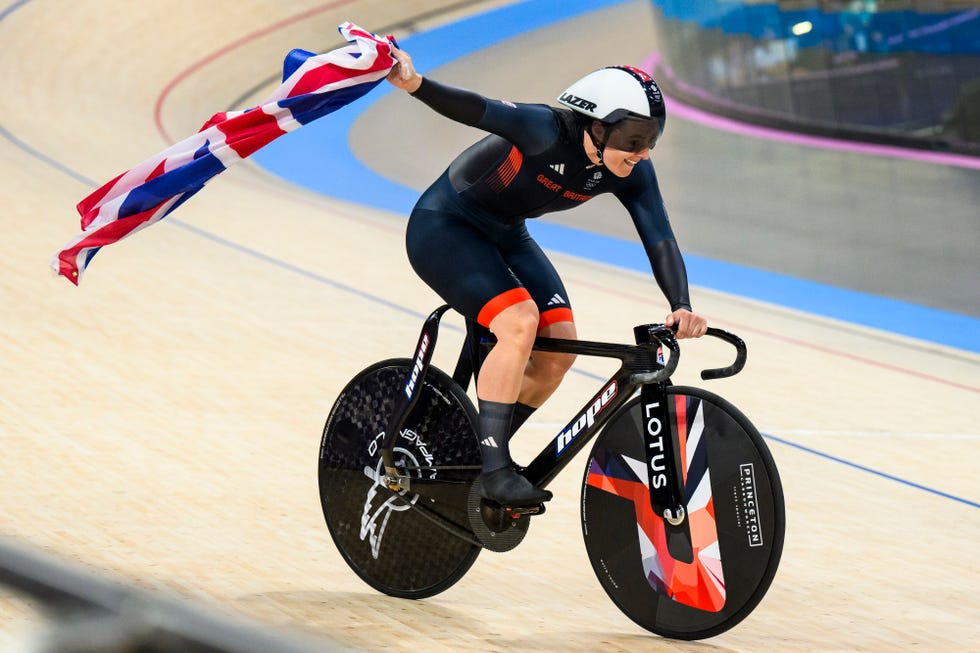 Open Gallery
Open GalleryRelated Stories
Michael Venutolo-Mantovani is a writer and musician based in Chapel Hill, North Carolina. He loves road and track cycling, likes gravel riding, and can often be found trying to avoid crashing his mountain bike.
Source link : https://www.bicycling.com/news/a61792205/is-olympic-level-cycling-tech-within-reach/
Author :
Publish date : 2024-08-06 21:25:38
Copyright for syndicated content belongs to the linked Source.













